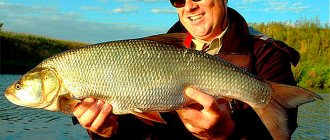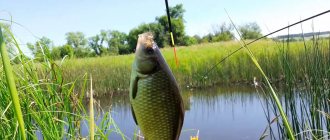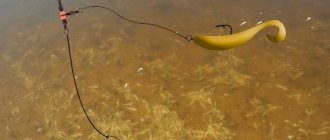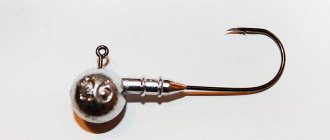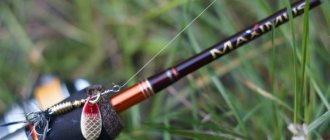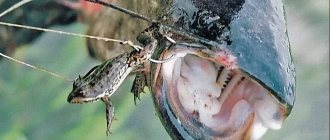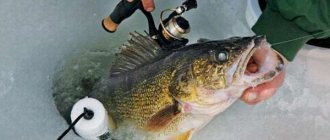Lure fishing is an exciting, exciting and exciting area of spinning fishing. Using this bait, you can successfully hunt all predatory and semi-predatory representatives of the ichthyofauna that inhabit the water bodies of our country.
Fishing with a spoon is possible at any time of the year. The variety of this type of bait allows you to fish both in closed reservoirs with standing water and in fast rivers with strong currents. The victims of spinning rods are classic predators - perch, pike perch, pike, asp and catfish. Semi-predatory underwater inhabitants - chub, ide, rudd, dace. As well as representatives of northern latitudes - grayling, whitefish, trout, lenok, taimen, nelma and others.
What is a spinner
In the fishing world, it is customary to call a spinner a type of bait that has from one to several hooks and which outwardly imitates a small fish or insect.
Outwardly, it resembles a metal petal and can be painted in any color palette.
The principle of the spinner's operation is as follows - when cast by a fisherman, it creates a certain vibration under water and sparkles, which especially attracts fish that are located in the area into which the cast was made.
Important! This bait is especially good for catching predatory aquatic inhabitants, which is why it is often used when catching pike, perch, asp and other fish.
Main types
In a fishing store, thanks to the huge assortment of spinners, it will not be difficult to choose exactly the model that will ideally meet all the requirements. Selecting a product is not difficult, but in order not to make a mistake with your choice, you should carefully study the main types of bait.
Hesitating
The basic operating principle of the product consists of oscillating movements, to which the fish that live very close to the casting site react. Thus, thanks to this design, a fairly believable imitation of a small fish is created, which attracts the attention of the prey with the shine of the metal plate and sounds.
Due to the swivel, a hook is attached to one side of this design, and a fishing line to the other side.
This type of bait is ideal for autumn and will especially arouse the interest of predatory inhabitants, who, before the start of the cold season, quite actively peck at the oscillating bait, confusing it with fish.
Rotating
The abbreviation “spinner” is especially common in the fishing world. The model has a very complex design, which consists of a rod measuring 5 centimeters, which is fixed to the leash by means of a winding ring. From the other edge, hooks, anchors and other devices are attached to the product.
Once in the water, the spoon begins to perform rotating actions that attract the attention of the fish and provoke it to bite.

Spoon jigs
The design has a cylindrical shape and this is its distinctive feature. The use of a spinner-bait is in fishing, carried out by casting it into a reservoir.
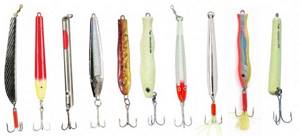
“Unhooked”
This type has a unique manufacturing technique, due to which the hook is firmly hidden under a metal mesh. And it comes out only at the moment when the fish begins to bite the spoon - this technique is unique in its content. Thanks to this technology, the fisherman, at the time of casting, does not have to worry about the likelihood of snags, which negatively affect the quality of the gear used for fishing.
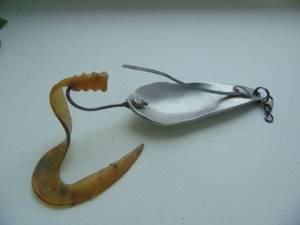
Criteria for choosing the right spinner
When choosing a spoon for fishing, you need to rely on some criteria that will help you choose a more suitable option:
- Before you start making your choice, you need to decide which predator the bait is aimed at and under what weather conditions you plan to fish.
- If the water in a pond has a cloudy tint. It is best to select a spinner with a characteristic enhanced shine.
- Even the most attractive spoons with a polished metal surface should be avoided, since in the water they can only scare off the inhabitants with their too strong shine.
- If the reservoir where you plan to fish boasts clear water, and the fishing itself will take place in clear weather, then it is best to take with you matte spoons with scale detailing, which are sure to attract the attention of a potential victim.
- If you plan to fish for perch, then it is best to take smaller baits with you to the pond, and if you plan to catch pike, then it is better to choose large spoons, which are ideal for such predatory fish.
- It is best for beginners to pay attention to oscillating spoons, which will not be difficult for him to handle.
How to catch pike with a spoon
To ensure that catching this predator does not turn into trouble, you need to focus on some tips:
- For fishing, it is best to take a rod whose length is 2.10-2.40 meters and a test rod of size 5-20.
- You can choose any spinning reel, and it is better to select a fishing line based on 0.25-0.28 mm in diameter.
- The selection of spinners does not have strict restrictions, but it is best to give preference to oscillating models.
- During the fishing process, you need to lower the bait to the bottom and then, using the tip of the spinning rod, lightly toss the spoon and perform a slow retrieve.
Fishing for pike from the shore in spring
One of the most effective ways to catch pike in the spring from the shore is a jig with a stepped retrieve. The bait should be near the bottom and touch it periodically. Slow-playing lures are used for this purpose.
. It can be:
— vibrotails from 13 to 24 centimeters long;
— silicone twisters.
It is advisable to load them with heads that roll from side to side. The baits will become more playful. The wiring is done slowly, smoothly, with decent pauses. Locations are changed regularly. They move to a new point after 10-12 unsuccessful casts.
A good catch can also be achieved by twitching in water bodies overgrown with vegetation. Oscillating spoons and surface wobblers are used for it. It is advisable to make casts so that the bait ends up a few meters from the place where the predator is supposedly hiding. Wiring is done with regular gentle jerks.
For shore fishing, it is advisable to have waders or a wading suit. The equipment will help you get closer to the predator’s site. If you fish from the shore itself, you need to make casts at an angle of 45º relative to its line. In shallow bays, baits can be cast at any angle.
How to catch asp with a spoon
Catching this fish requires special patience and strength from the fisherman, because catching it is sometimes not so easy, since, once hooked, it can offer very strong resistance, which some amateurs are sometimes unable to cope with. So, for such fishing you should also adopt a couple of useful tips:
- It is best to give preference to a spinning rod up to 3 meters long, the test of which does not exceed 70.
- The diameter of the fishing line should be 0.2-0.25 mm.
- It is better to fish with spoons weighing from 30 to 45 grams.
- A distinctive feature of the asp fishing technique is that the process is carried out using surface technology, when the wiring passes to the very surface of the reservoir.
Choice depending on the time of year
in spring
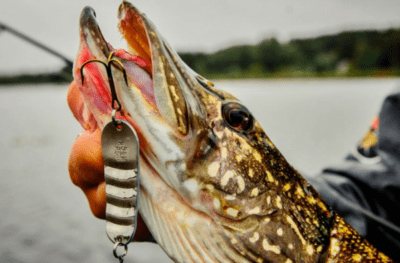
After the ice melts, pike can go into shallow water before spawning, although some individuals still stay in the depths. In the coastal zone, the best result can be achieved using large, light spoons, and deep places can be fished:
- front-loaded turntables;
- castmasters;
- heavy vibrations.
After spawning, some of the pike remain in shallow water and there they are also caught with spoons, not neglecting spinners. Among the remnants of old grass and the sprouts of young vegetation, it is advisable to use non-snagging ones.
Expert opinion
Knipovich Nikolai Mikhailovich
Zoologist, hydrobiologist. I am interested in fishing at a professional level.
In spring, you should remember about the spawning ban that exists in many regions. As a last resort, you can catch pike using the catch-and-release principle, unless there is a complete ban on fishing with spinning rods.
In summer
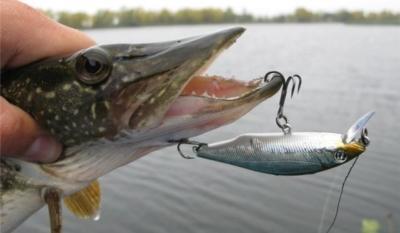
In summer, pike is caught as follows:
- in shallow water with a clean bottom - on light spoons and turntables, including unloaded ones;
- in overgrown places and snags - on non-snagging ones;
- in deep places - on turntables with a heavy core, front-loaded turntables, heavy vibrators, including castmasters.
in autumn
Autumn is the time for big baits. Large spinners are becoming priority baits. You can also continue fishing in “toad beds” until the grass settles.
Tips and tricks
Many fishermen go to the pond not only to ensure a rich catch, but also to truly enjoy the process.
Effective fishing is impossible without following certain rules and taking into account recommendations, so before you get ready to fish with a spoon, you need to consider a few useful tips:
- Choosing the optimal luster location. The choice of location will depend solely on the location of the cast and its distance. If you plan to fish from the shore, then you need to make a long cast and be fully prepared to react to any blow from the line, starting to pull on representatives of the aquatic world.
- You also need to consider the choice of bait . Many fishermen take one spoon with them when fishing, but this is wrong, since it is impossible to accurately guess what the fish will bite on, which is why you need to take other designs with you as a backup option.
- Trying to cast to the same place is highly not recommended . Predatory fish do not live in one place, they are mixed throughout the entire body of water, so if you were unable to catch it in one place, then it is best to recast and be patient, setting yourself up for a catch.
- It is necessary to choose the brightness of the bait correctly , for example, if the water in the reservoir is cloudy, then the bait should be chosen in bright colors, and if it is transparent, then, on the contrary, dark colors - this will attract the attention of individuals, and not scare them away.
- During the spawning season, it is best to look for fish in bays , since the water there is several degrees warmer and the current is weak. To ensure yourself a rich catch, you need to find tributaries and creeks that have no algae and throw a spoon.
- If you plan to catch perch at the very beginning of winter, then you need to carefully drill holes in the deep parts of the reservoir, since at the beginning of winter it prefers to go to depths where there is no strong current. At the end of winter, it is best to look for it in shallow water where there is a current, since it begins the hunting season and therefore leads an active lifestyle.
- If there is a possibility of a hook , the bait should be moved carefully and at not too high a speed. There is no need to make sharp, tearing movements, as this will negatively affect the quality and directly on the catching process, and, in general, there is a possibility of spoiling the tackle.
- You should not strive to throw the bait over an excessively long distance , since most predators prefer to live close to the shore, and that is where the sweet spot is.
Lure fishing is a process that will satisfy even the most picky fisherman. With effort and patience, you will be able to collect a rich catch in a short period of time spent near the reservoir.
Tackle for vertical trolling from ice
Today, fishing companies offer a wide selection of fishing rods for winter lure fishing. Fishing rods with bamboo and ebonite rods, the handles of which are made of balsa wood or foam plastic, have not yet become a thing of history. However, more and more often on the shelves of specialized stores you can see winter fishing rods made of more modern materials - vinyl plastic, nylon and others. Very practical are composite models, in which a small reel is attached to the handle. A telescopic whip is hidden in it. A large selection of gear is now on the market.
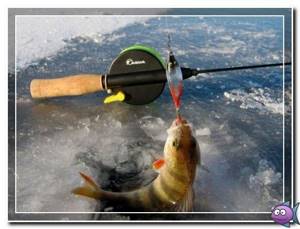
First of all, anglers take into account the performance characteristics of the fishing rod, as well as ease of use. Ideally, the tackle should be light and at the same time quite durable, with an elastic, sensitive tip, fit comfortably in the hand and not cause any problems to the angler during the fishing process. The power of the fishing rod depends on the fishing depth and the expected size of the prey. The rule is simple: the deeper the fishing and the larger the fish, the more powerful the fishing rod.
Each fisherman has his own preference regarding the reel. Some are quite satisfied with a simple inertia mechanism, while others find it easier to reel in hooked fish by rotating the inertia-free handle. The main thing is that the coil works without failures.
The fishing line is selected taking into account the size of the predator. It is necessary to understand that in clear cold water, too thick monofilament can alarm the fish. Experienced winter fishermen know very well that when the bite is bad, sometimes it is enough to reduce the diameter of the fishing line, and the underwater inhabitants will immediately become active. In addition, thick, coarse fishing line “smears” the movements of the spinner and does not allow it to play attractively.
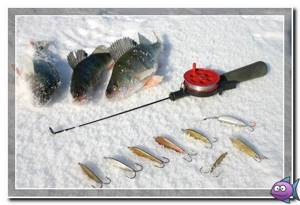
Do you need a nod when flashing? This question remains open. Modern technology has made it an optional element. Graphite and carbon fiber whips transmit the bite well into the hand, provided that the tackle is assembled correctly (the mass of the bait corresponds to the thickness of the fishing line and the elasticity of the tip). Those who still fish with old (Soviet) rough gear or homemade fishing rods cannot do without a nod. In this case, only he is able to clearly record the bite.
